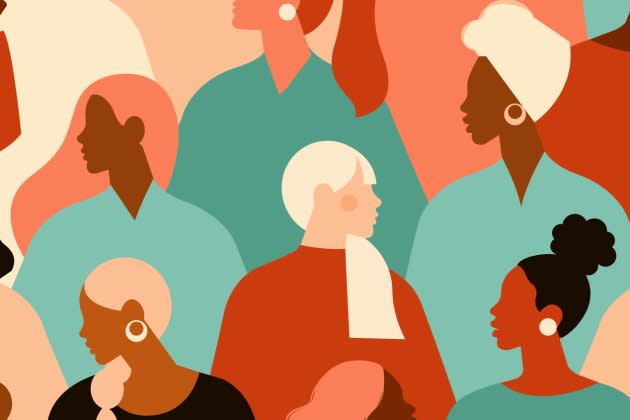Female Actors Achieved Parity With Men In Streaming Movies Last Year, But Latinas Still Vastly Underrepresented: Study

Female actors achieved parity with their male counterparts last year on original U.S. films made for the major streaming services, according to the latest report from Dr. Martha M. Lauzen, founder and director of San Diego State’s Center for the Study of Women in Television and Film.
Only 6% of all speaking characters were Latina, however, and just 5.6% were Latino, “making them the most underrepresented ethnic group in film when compared to their representation in the U.S. population.” And behind the cameras, women of all races and ethnicity still have a lot of catching up to do.
More from Deadline
USC’s Norman Lear Center Report Urges Hollywood To Re-Examine Gun Violence In Films & TV Shows
Female Roles In Top-Grossing Films Increased "Slightly" Last Year, Report Finds
“In 2022, more original U.S. films on major streaming services featured female than male protagonists,” the Streaming Women report found, noting that 49% of these films featured female protagonists versus 38% that featured male protagonists, with 12% being ensembles. The report defines protagonists as the characters from whose perspective the story is told.
Females also comprised 44% of major characters and 40% of all speaking characters in 2022. “These films feature female characters in proportions that approximate the representation of girls and women in the U.S. population,” according to the report, which defines major characters as those who appear in more than one scene and are instrumental to the narrative of the story, while speaking characters include all major and minor characters.
The report surveyed all original narrative U.S. films released by Netflix, HBO Max, Prime Video, Disney+ and Hulu in 2022, examining over 1,800 on-screen characters and more than 1,100 behind-the-scenes credits. Read the full report here.
Behind-the-scenes, women accounted for 26% of all directors, writers, executive producers, producers, editors, and cinematographers working on original films by streaming services in 2022. Women fared best as editors (30%), followed by executive producers (29%), producers (27%), writers (23%), directors (22%), composers (12%) and cinematographers (8%).
The majority of films (72%) employed zero to four women in these behind-the-scenes roles; 26% of films employed five to nine women, and 3% employed 10 or more women. By contrast, only 7% of films employed zero to four men in the behind-the-scenes roles considered; 49% employed five to nine men, and the remaining 43% employed 10 or more men.
The report also found that films with at least one woman director were more likely than films with no women directors to feature higher percentages of females in other key behind-the- scenes roles. On films with at least one woman director, females comprised 54% of writers. On films with exclusively male directors, women accounted for just 13% of writers.
On films with at least one woman director, females made up 42% of editors, while on films with male directors only, women comprised 26% of editors.
On films with at least one woman director, females comprised 22% of cinematographers. On films with exclusively male directors, women accounted for just 3% of cinematographers. On films with at least one woman director, females made up 17% of composers, while on films with male directors only, women comprised 10% of composers.
Looking a female characters by race and ethnicity, the report for that last year, 62.1% of female characters in speaking roles were White, 20.9% were Black, 8.2% were Asian or Asian American, 6.% were Latina, 1.6% were Middle Eastern/North African (MENA), 0.7% were of some other race or ethnicity, 0.4% were Native American and 0.1% were of multiple races or ethnicities.
As for major characters, 57.1% of female characters were White, 25.1% were Black, 8.4% were Asian or Asian American, 6.2% were Latina, 1.1% were MENA, 1.1% were Native American, 0.7% were of some other race or ethnicity, and 0.4% were of multiple races or ethnicities.
The report also found that ageism is alive and well in streaming.
“While the percentage of female characters in speaking roles declined precipitously from their 30s (32%) to their 40s (18%), the percentage of male characters stayed the same (25%),” the report found. “Few male or female characters aged into their 60s (males, 7% vs. females, 5%).”
And though female characters outnumbered males through their 30s among major characters, the report found that “male characters 40 and older outnumbered females, with slightly more than twice as many male characters as female characters in their 50s. This age difference reinforces the stereotypes that females are valued for their youth and beauty and males are valued for their accomplishments. Interestingly, binary and transgender characters in major roles do not age past 20, suggesting that they have no future or live truncated lives.”
Best of Deadline
Sign up for Deadline's Newsletter. For the latest news, follow us on Facebook, Twitter, and Instagram.

